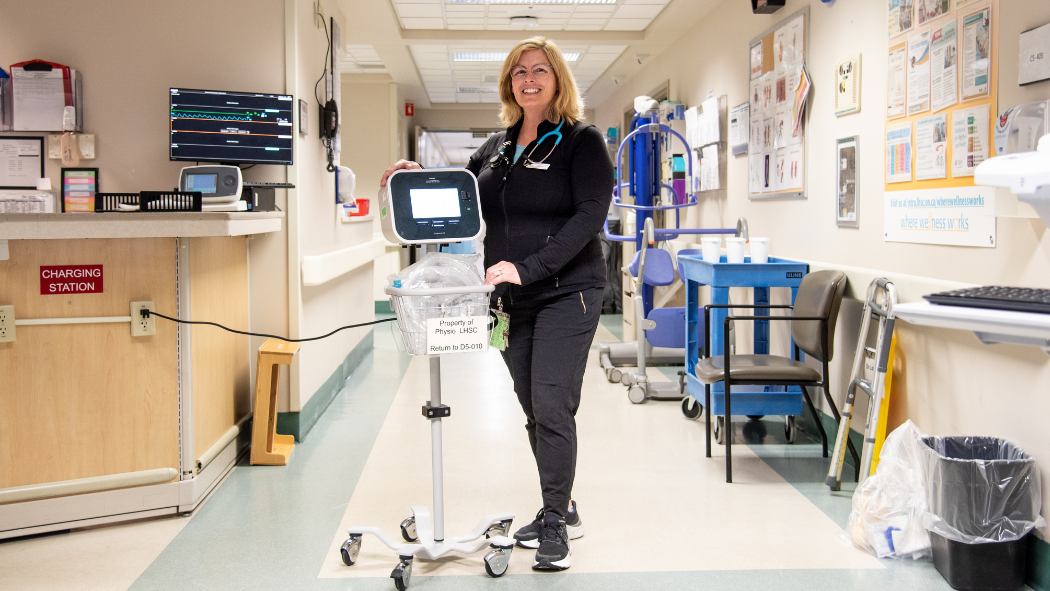
June 3, 2024
Physiotherapists are known for getting people moving after musculoskeletal injuries, but they also provide life-changing cardiorespiratory care to patients in acute care settings.
Cardiorespiratory physiotherapy, also known as “chest physiotherapy,” is an area of physiotherapy that focuses on the assessment and treatment of people with conditions affecting the cardiovascular (heart) and respiratory (lung) systems. These conditions include cystic fibrosis, chronic obstructive pulmonary disease (COPD), pneumonia and recent heart attacks, among others.
People with neuromuscular conditions, such as amyotrophic lateral sclerosis (ALS), multiple sclerosis (MS) and spinal cord injuries also benefit from cardiorespiratory physiotherapy, as do patients who have recently had thoracic or abdominal surgery – including organ transplants.
“We have the ability to directly impact a patient’s condition in the moment,” says Tara Cotterill, Physiotherapist in the ENT and Cardiology units at London Health Sciences Centre (LHSC). “Our treatment may be able to keep a patient from requiring a ventilator, so it’s a big responsibility.”
Patients who benefit from this type of physiotherapy often have difficulty clearing their secretions and may have a chest X-ray that shows a collapsed lobe or lung due to mucous plugging. Physiotherapists receive training to understand the pathology behind various cardiorespiratory conditions and which techniques should be used or avoided in each instance. These techniques include manual percussion, breathing exercises or the use of equipment like a mechanical inexsufflator.
Cotterill recalls a time she was called to the bedside of a patient who was in significant respiratory distress. The patient had recently had mouth and neck surgery and was having trouble clearing phlegm, which caused her to feel like she was choking. By using manual clapping and other techniques to loosen the phlegm, Tara was able to help the patient cough it up so she could breathe again.
“The range of patients we see is pretty broad,” says Jennifer Curry, Physiotherapist in LHSC’s Intensive Care Unit (ICU). “Our goal with cardiorespiratory physiotherapy is to optimize their secretion clearance, which can lead to improved oxygenation and eventually improved functioning.”
Physiotherapists at LHSC collaborate with other members of the patient’s circle of care, including physicians, nurses, speech-language pathologists, occupational therapists and respiratory therapists to improve patient outcomes. Regular deep breathing, coughing and mobilization have been shown to reduce post-operative pulmonary complications, so the team works together on surgical units, for example, to help the patient through these post-operative best practices.
It’s an important job, but it’s one Curry and Cotterill are proud to have. Together, they’ve seen thousands of patients throughout their time at LHSC.
“It’s an exciting job,” says Cotterill. “We need to be quick on our feet and know all the indications and contraindications. It’s about using the right technique on the right patient at the right time so we can make the greatest impact.”
